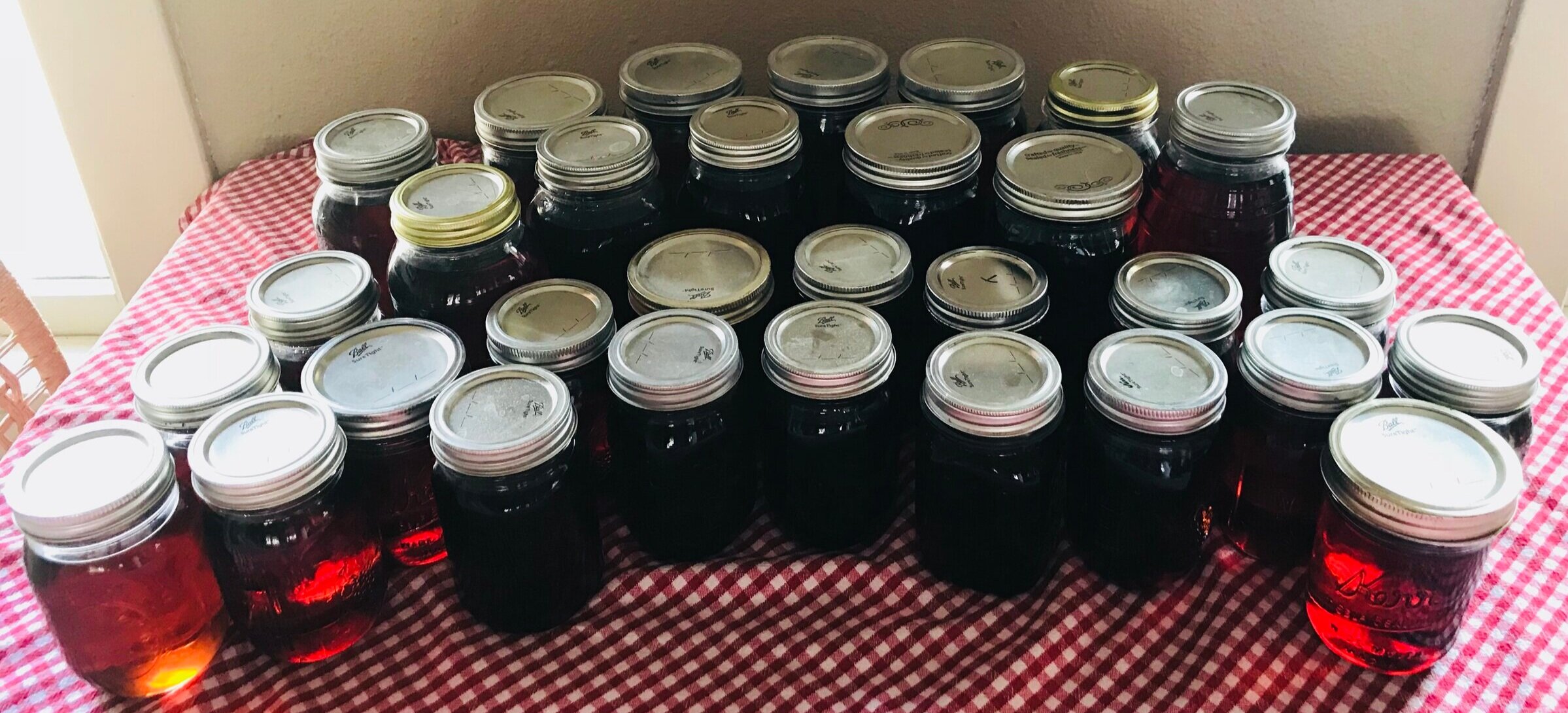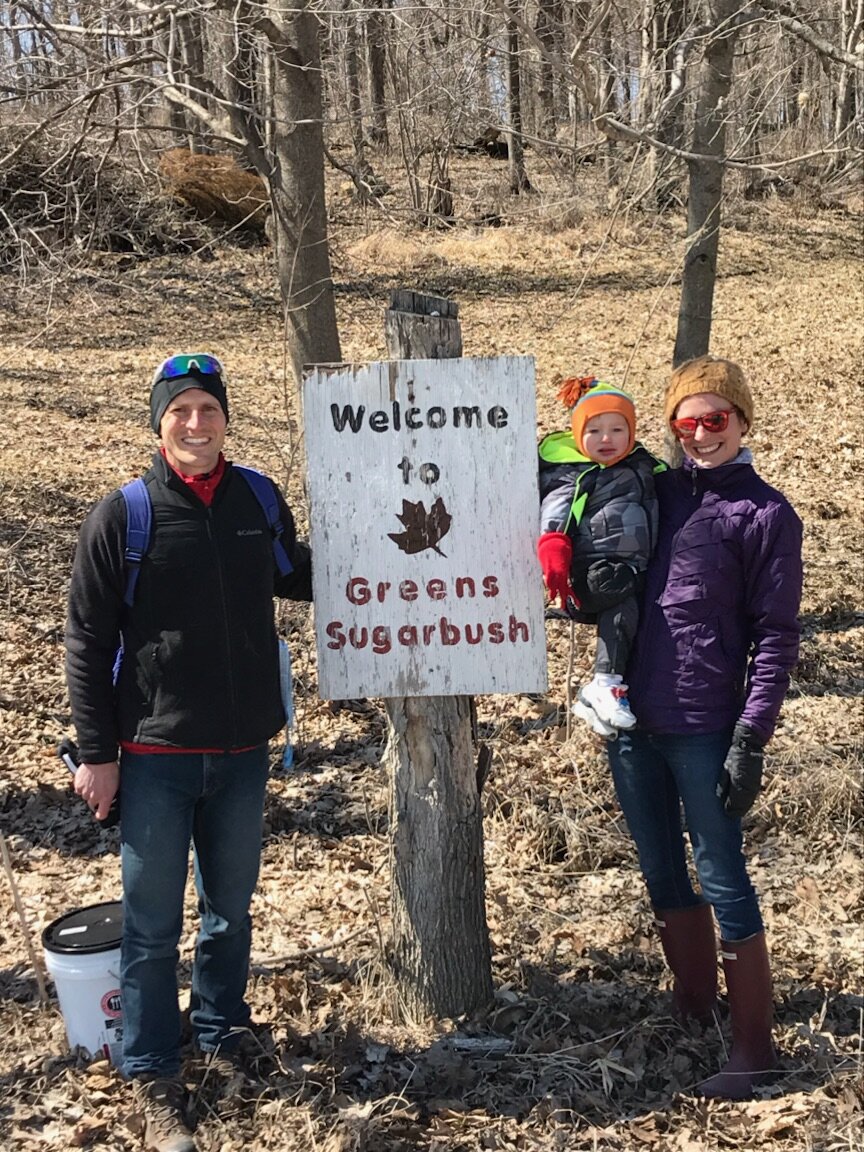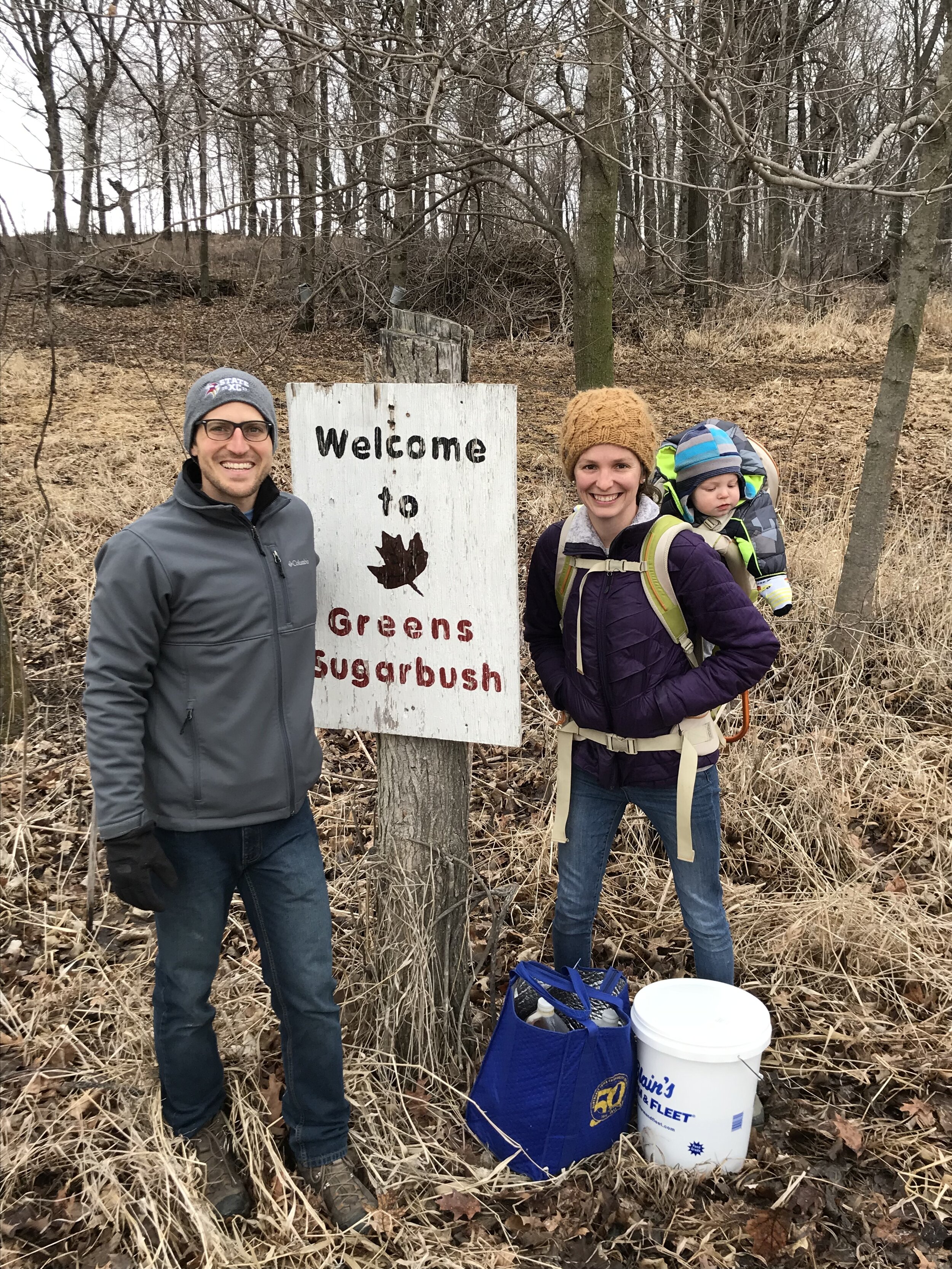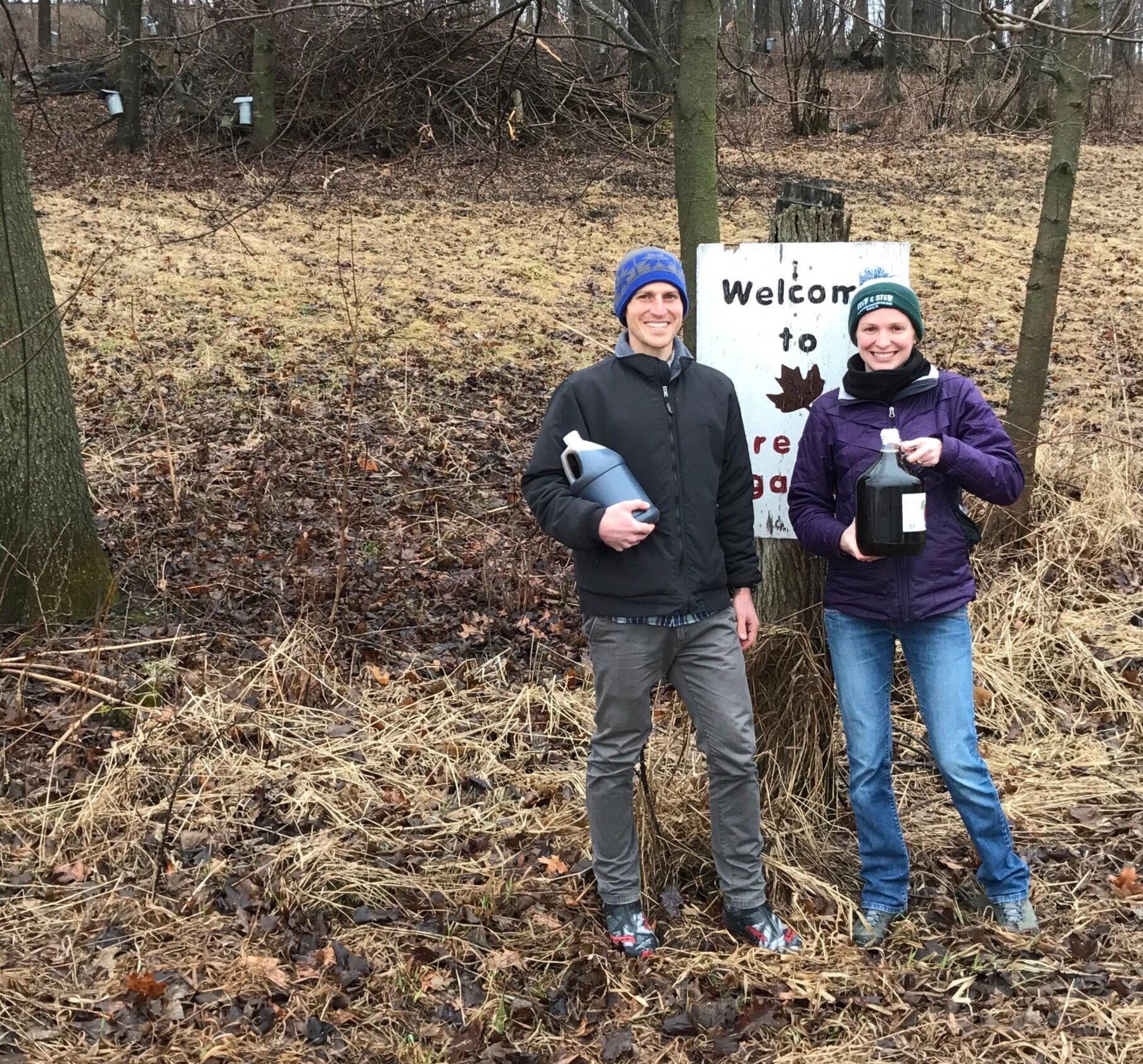There are traditions that mark the passage of time in our household, as I’m sure there are in your family. For us they usually involve some act of food acquisition or preservation, such as canning salsa, making pesto, making pepper jelly, visiting an orchard and making applesauce, going to SnowPac to stock up on frozen berries, visiting Mennonite greenhouses for potted plants, and the annual Decorah garage sale weekend (… wait Adam tells me this isn’t food related, but he doesn’t know about my annual white chocolate chip raspberry muffin from the local coffee shop).
We’ve been attending a maple syrup festival called Green’s Sugar Bush for the last 5 seasons. A sugar bush is a stand of trees used for collecting maple syrup. Oh, how we wish we had our own stand of maples, but alas we have a stand of black walnuts. I have yet to acquire the taste for these.
The festival always includes a big big pancake feed, with a line that usually takes a solid 1.5-2 hours and the chance to purchase syrup or maple syrup candies.
Green’s Maple Syrup Festival … take note of the “short" (ha) line for the pancake and sausage feast.
The typical line of cars at the maple syrup festival. Photo from 2019.
We weren’t sure our annual sugar run was going to happen this season due to COVID-19 and the social restrictions. Their festival has been postponed until the Fall, but we were still able to pick up syrup from their little sugar shack. We pretty much have our maple syrup use down to a science and know we need 4 gallons to see us through until the subsequent syrup festival.
I grew up smothering puddles of Aunt Jemima on my Dad’s infamous Uncle Bill pancakes. I suppose the smothering habit hasn’t died, but my taste palate has shifted. For those of you who’ve never had real maple syrup you’re missing out on a big treat. We use maple syrup for waffles and pancakes, which we make at least once a week in our house. We also use maple syrup on our homemade plain yogurt. We used to make granola using maple syrup, which honestly I think I overdosed on and we haven’t made it recently.
Our bill came to $189 for 4 gallons, mind you it’s cheaper to bring your own container. We have two recommendations if you’re buying in bulk:
1.) Don’t use glass - we witnessed someone break their full gallon-sized jar of maple syrup. Ouch
2.) We were told this year not to let the syrup sit for any length of time in the plastic jugs as the syrup will start to adopt the flavor of whatever was previously in the jugs, which for us would have been vinegar.
You might scoff at $47.25/gallon (very reasonable and competitive by industry standards), but we are supporting their family’s livelihood. We feel an overwhelming sense of do-good satisfaction in that and the flavor. The flavor. It transforms me to some life I’ve never lived - to long picnic tables in the mess hall of some backwoods Vermont Boy Scout camp, with wood-fire permeating the taste of sausages and the stacks of fluffy buttermilk pancakes oozing with the sweetness.
How to store maple syrup
Canning process - How to can maple syrup using a water bath. It’s NOT hard.
You will need:
Water (boiling)
4 burner stove
A canner (large pot) + rack
3 other pots - one for steaming jars, one for steaming lids/rings and one for heating syrup
Clean mason jars
New lids + rings
Ladle, funnel, tongs
Towels
Steps:
First and foremost, use caution when working with boiling liquid
1.) Fill the canner with water on the stove. The water should be approximately 2/3 to the top of the pot.
2.) Heat maple syrup to boil on stove.
3.) Sanitize mason jars either by washing with warm water/soap or run through a dishwasher cycle.
4.) Use about 2-3 inches of water and steam mason jars, lid-side down, in large pot on stove while syrup comes to a boil
5.) Put about 2-3 inches of water in a smaller pot and steam the new lids and rings
6.) Once syrup is boiling, remove pot from stove and place on counter. Take a mason jar and fill the jar using ladle, leaving about 1 inch of headspace at top (we usually fill until the point where the body of the jar meets the top).
7.) Quickly place lid and ring on mason jar and tighten, take care not to over-tighten.
8.) Fill as many jars as you can fit in your water bath (we can fit 5 quart jars into our canner). Once these jars are full, put the mason jars into the canner. The water should be boiling and hot. Let the jars sit in the boiling water for about 15 minutes.
9.) Once done, CAREFULLY place the mason jars on a protected surface (a couple of bath towels) and wrap them up. They will be hot, so use caution. Let them cool slowly and naturally for about 12 - 24 hours. Check the lids. They should have sealed, in other words they shouldn’t make a popping sound.
5 years in Green’s Sugar Bush signs. Note the selfie in 2020. Not a soul around to take the photo and Linden zzz’ing in the car.











